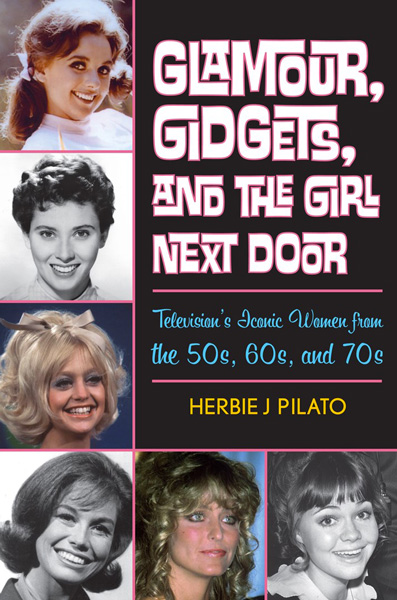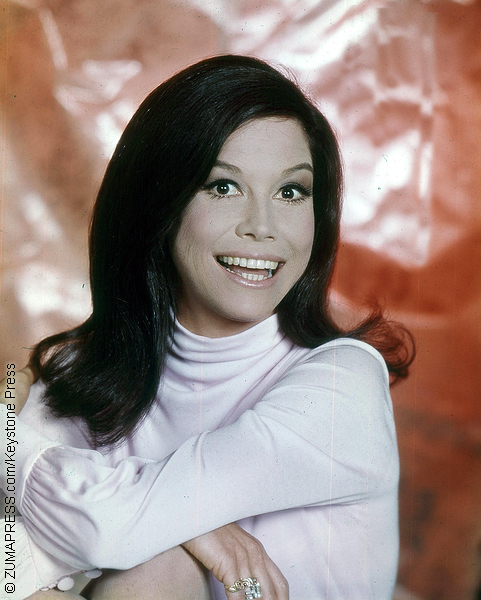TV’s iconic women profiled in nostalgic new book: review
By Tribute on October 3, 2014 | Leave a Comment
 Television has a long history of challenging the roles women play in the world through the magic of onscreen representation. Women like Laverne Cox, whose Emmy-nominated portrayal of Sophia Burset in Orange is the New Black is breaking down doors for the transgendered community, and Lena Dunham, whose show Girls has become a platform to challenge how we view women’s bodies on screen, have broken down barriers through their work on television. If we go back a few decades, some of the game-changing names of the business included Marlo Thomas, Mary Tyler Moore and Lynda Carter.
Television has a long history of challenging the roles women play in the world through the magic of onscreen representation. Women like Laverne Cox, whose Emmy-nominated portrayal of Sophia Burset in Orange is the New Black is breaking down doors for the transgendered community, and Lena Dunham, whose show Girls has become a platform to challenge how we view women’s bodies on screen, have broken down barriers through their work on television. If we go back a few decades, some of the game-changing names of the business included Marlo Thomas, Mary Tyler Moore and Lynda Carter.
Glamour, Gidgets and the Girl Next Door, written by actor/producer and classic television enthusiast Herbie J. Pilato, is a reminiscent look at the women who dominated TV screens in the ’50s, ’60s and ’70s, who, in some ways, became pioneers for the modern woman. Pilato’s book profiles over 40 women who graced the small screen, providing background information on how their TV roles broke down barriers for women and gave insight on how the actresses themselves felt about them.
Most of the profiles are succinct, only a few pages long, but give enough information to pique a reader’s interest. One highlight in the book is the section about Marlo Thomas, who gained fame for her role as Ann Marie in the ’60s sitcom That Girl, a feminist and social activist who was the first to portray a working woman on TV. In Thomas’ profile, Mary Tyler Moore credits Thomas for leading the charge and “opening the door that I walked through.” Moore is, of course, the actress who forever changed how women have been represented onscreen, making the image of the working woman not only mainstream but a TV staple.
Another book highlight is the profile on Nichelle Nichols, Nyota Uhura on Star Trek, who was a trailblazer as one of the first black women on television and also filmed the first interracial kiss between herself and co-star William Shatner. When Nichols considered leaving the role, Dr. Martin Luther King Jr. himself convinced her to stay because he believed she was an important role model for young girls. One of the girls who Nichols inspired turned out to be Mae Jemison, a former NASA astronaut.
While the book gives insight into some of the true pioneers for women on the silver screen, the introduction includes some troubling criteria for how some of these actresses were chosen. As well as obviously having to be the lead actress on a television program in the ’50s, ’60s or ’70s, they had to be young, their iconic role couldn’t be a “mother or aunt-type figure” and had to be a “romantic figure or a mature but not matronly woman, with a vibrant personality.” While it’s understandable from an editorial perspective, leaving out pioneers like Lucille Ball and Shirley MacLaine makes you wonder exactly what value is being placed on the women profiled. Are cute looks and a carefree personality worth more than the work some of these women have done to challenge gender roles on screen?
Regardless, this is a great read for anyone who is nostalgic for the simple times of classic television sitcoms or who want to know about the women who led the way for the pioneers of the 21st century. Glamour, Gidgets and the Girl Next Door: Television’s Iconic Women from the 50s, 60s and 70s is currently on bookshelves. ~Kelly Townsend
Comments & Discussion
Similar Articles
Celebrities we lost in 2017 – from David Cassidy to Mary Tyler Moore
December 28, 2017 | 3 Comments
From David Cassidy to Mary Tyler Moore, and Bill Paxton to John Hurt, there have been a number of celebrity deaths this year. Here, we take a look back at them.
Mary Tyler Moore dies at age 80
January 25, 2017 | 14 Comments
Beloved TV icon Mary Tyler Moore was rushed to a Connecticut hospital in grave condition this morning and has passed away at the age of 80. RIP Mary.



There are no comments yet, why not be the first?